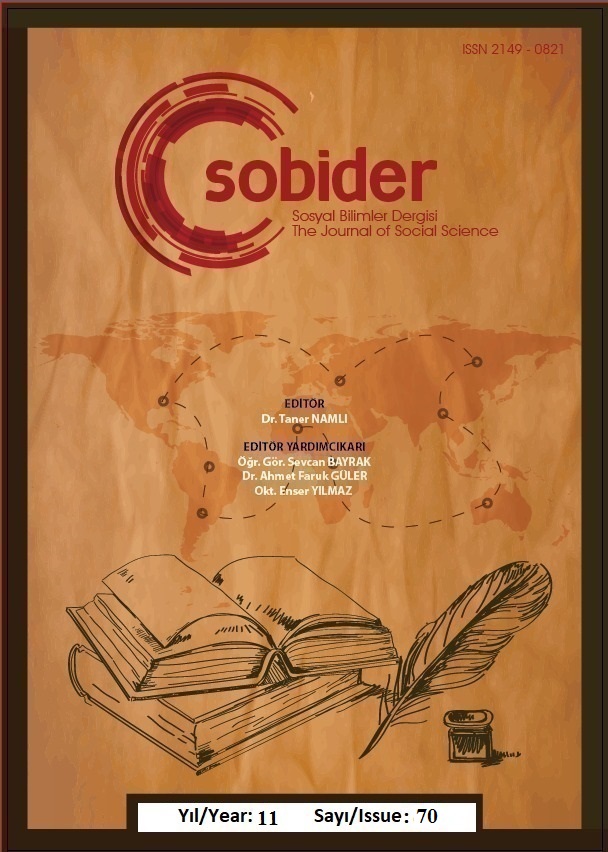SEYYİD MUHAMMED MAʿRİFÎ'NİN RİSÂLE-İ ÂDÂB VE TARÎKATNÂME-İ FETHÜ'L-MAʿÂRİF ADLI ESERİNDE YER ALAN DİNİ VE TASAVVUFİ KİŞİLER
Author :
Abstract
On sekizinci yüzyılda Osmanlı topraklarında tasavvuf kültürü büyük bir gelişim göstermiştir. Seyyid Muhammed Maʿrifî, bu yüzyılda yaşamış önemli mutasavvıflardan biridir. Rifâiyye tarîkatının Maʿrifiyye kolunun kurucusu olan Seyyid Muhammed Maʿrifî, İstanbul’un Kartal semtinde yer alan tekkesinde talebelerini irşat ettiği sırada Risâle-i Âdâb ve Tarîkatnâme-i Fethü’l-Maʿârif isimli mensur eserini kaleme almıştır. Risâle-i Âdâb ve Tarîkatnâme-i Fethü’l-Maʿârif’in en önemli özelliği, tek yazma nüshası olan ve bugüne kadar kaynaklarda adına rastlanmamış bir eser olmasıdır. 218 varaktan oluşan bu eser, Maʿrifiyye tarîkatının âdâb ve erkânına ışık tutmasının yanı sıra dinî vecibeleri tasavvufî bir bakış açısıyla yorumlaması hasebiyle dikkate değerdir. Bu çalışmada, Risâle-i Âdâb ve Tarîkatnâme-i Fethü’l-Maʿârif’te adı geçen dini ve tasavvufi kişiler odağa alınacaktır. Eserde bahsi geçen peygamberler, sahabeler ve mutasavvıflar hakkında bilgi verilecek sonrasında ise müellifin bu kişileri görüş ve değerlendiriş biçimi söz konusu edilecektir.
Keywords
Abstract
Sufi culture showed great development in the Ottoman lands in the eighteenth century. Seyyid Muhammed Maʿrifî is one of the important Sufis who lived in this century. He is the founder of the Maʿrifiyye branch of the Rifâiyye sect. Seyyid Muhammed Maʿrifî wrote his prose works called Risâle-i Âdâb ve Tarîkatnâme-i Fethü'l-Maʿârif while he was guiding his students in his lodge located in the Kartal district of İstanbul. The most important feature of Risâle-i Âdâb ve Tarîkatnâme-i Fethü'l-Maʿârif is that it is a work that has a single manuscript copy and has not been mentioned in the sources to date. This work, consisting of 218 leaves, is noteworthy because it sheds light on the etiquette of the Maʿrifiyye sect, as well as interpreting religious duties from a sufi perspective. In this study, the religious and Sufi people mentioned in Risâle-i Âdâb and Tarîkatnâme-i Fethü'l-Maʿârif will be focused on. Information will be given about the prophets, companions and Sufis mentioned in the work, and then the author's view and evaluation of these people will be discussed.





